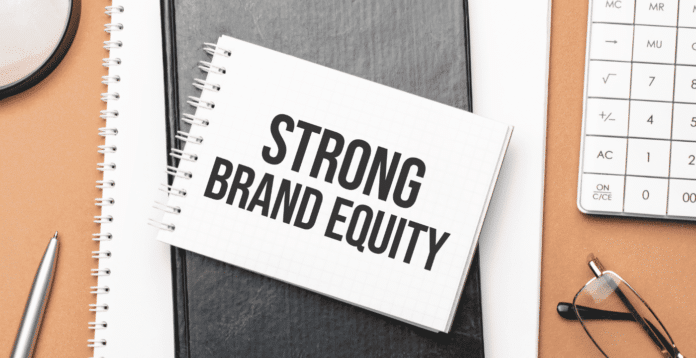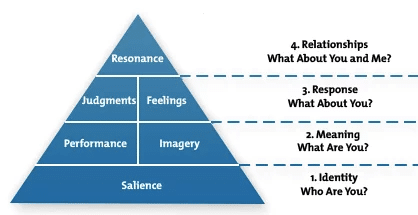Brand equity refers to the value and identity of a brand or company, and is a crucial factor in how customers perceive and recognize the brand. It is a cumulative outcome of factors such as product quality, customer experience, and consistency that develop over time. There are also several metrics used to measure equity, including brand awareness, brand loyalty, and perceived quality.
Strong brand equity provides numerous benefits to a brand, particularly in building customer trust. A brand with strong equity is better equipped to compete with rivals and foster customer loyalty to its products. Furthermore, strong brand equity can enhance a brand’s market popularity and bolster sales figures, leading to increased profitability.

Table of Content
The Importance of Brand Equity
Brand equity has several impacts that can benefit a business. Of course, these benefits can be obtained if the brand equity owned by a company is positive equity. Then, it should also be noted why equity is important for a brand to develop and get recognition from the public. Here are the importances of brand equity that you need to know.
1. Competitive brand
Positive equity can give a brand a competitive advantage and brand value that will help it stand out in a crowded market. When customers perceive a brand to have positive attributes such as quality, reliability, and innovation, they are more likely to choose that brand over others. As a result, brands can establish themselves as superior to other competing brands, thereby capturing customer interest.
2. Customer loyalty
Positive equity can lead to higher customer loyalty, as customers are more likely to have a positive emotional connection to the brand. When customers have a positive experience with a brand, they are more likely to develop an emotional attachment to the brand, which can lead to increased loyalty and repeat transactions.
Customers who have a positive perception of a brand’s equity are more likely to trust the brand and feel confident in their purchasing decisions. This trust and confidence can lead to greater customer satisfaction and a willingness to make repeat purchases from the same brand.
3. Higher price
Brands with positive equity can adjust their prices based on the quality of their products without fear of customer backlash. This is due to the fact that customers already place a great deal of trust in the brand’s reputation for excellence, which makes them more willing to pay a premium for products from that particular brand, rather than buy from another brand.
4. New products
When a brand has good equity among the public, it will be easier for the brand to release new products and sell them in a wide market. This is due to customer trust in the brand, so they will always be curious to try new products that are released. In addition, the product will also be more recognized in the market even though the product is a new product.
5. Long-term guarantee
Brands with robust equity typically have a longer lifespan than brands with weaker equity. In the event of economic shocks or unforeseen circumstances, strong brands are more likely to weather the storm due to the trust and loyalty they have built with customers over time. As a result, customers tend to remain faithful to these brands even in times of crisis, ensuring their longevity and survival.
Brand Equity Impact on ROI

Return on investment (ROI) is a critical metric that measures the profitability of an investment made by a brand or company. It is derived by analyzing the profit or loss incurred by the brand, relative to the amount invested. As such, brand equity plays a pivotal role in determining the level of ROI achieved.
A robust equity has the potential to enhance several aspects of a business, including increased customer order value, reduced advertising expenditure, improved profit margins, heightened sales figures, and enhanced customer retention rates. These factors can have a significant impact on ROI, as higher sales volumes typically translate into greater returns.
Also Read: 4 Ways How to Increase Restaurant’s ROI
How to Create Brand Equity
There are so many possibilities that can affect brand equity. But, the most essential factor is how equity is created, because it can define how much equity has an impact on a brand So, below are the tips that need to be implemented in order to create strong brand equity.
1. Find its purpose
The first step towards building brand equity for your brand is to establish a clear purpose. Before expecting the equity you want to achieve, it’s essential to define your goals and assess their feasibility. Furthermore, each purpose should be accompanied by a rationale that explains the underlying reasons. This approach will facilitate the achievement of your goals by providing a clear direction and a deeper understanding of the motives driving your brand equity strategy.
2. Test your messaging
To gain insight into the feedback your brand receives, it’s essential to test customer reactions and understand their needs. This approach may increase customer engagement with your brand, as it enables you to create messaging that resonates with their interests. By prioritizing customer feedback, you can refine your marketing strategy to ensure that it aligns with the needs of your target audience, ultimately enhancing the appeal of your brand.
3. Drive awareness
A strong brand equity relies on driving awareness among its target audience, with the objective of attracting public recognition of the brand’s existence. Achieving this goal typically requires a sustained investment in long-term campaigns aimed at building brand awareness. Such initiatives can help create an emotional connection with customers, resulting in a lasting impact that benefits the brand. By prioritizing brand awareness, companies can cultivate loyal customers.
4. Maintain consistency
To achieve public recognition, a brand must maintain consistency in its identity and personality. This can be achieved through marketing or advertising products consistently conveying the brand’s core message over time, without deviating from the established concept. By doing so, the brand can establish a distinct and recognizable identity that resonates with its target audience, fostering a sense of familiarity and trust.
5. Focus on the customers
In developing brand equity, customers must be the top priority because their perceptions of your brand will have a significant impact on the ongoing public perception. As such, it’s crucial to prioritize customer feedback and consider it when building your brand equity.
Understanding your customers’ needs and expectations is important in creating positive equity that resonates with your target audience. By focusing on delivering value to your customers and ensuring that their expectations are met, you can develop strong brand equity that generates loyalty and drives long-term growth.
How Brand Equity Increases Profit
Brand equity can drive profitability by fostering customer trust and loyalty toward the brand. When customers recognize the value of your brand, they are more likely to choose it over other brands, regardless of the price and money they might spend. This factor can drive long-term profitability by generating your business and product development over time.
Moreover, positive brand equity can attract new customers and increase public recognition. When your brand equity is discussed by many people, it can generate buzz and curiosity among potential customers, leading them to try the products. This also can lead to new loyal customers, further increasing profits over time. By consistently investing in building brand equity, your brand can create a virtuous cycle of customer loyalty and revenue growth.
Also Read: Marketing Strategies to Boost Retail Business Profit
How to Measure Brand Equity
Measuring brand equity can be difficult, but it’s important to understand if your branding is effective. Brand tracking studies can help you measure the impact of your branding campaign on awareness and association. There are two kinds of metrics that brand tracking studies focus on: business impact metrics and consumer impact metrics.
However, traditional methods of measuring branding impact may not always be reliable. Advances in AI and machine learning have enabled more accurate methods of measuring its equity. It’s important to stay up-to-date with the latest techniques and use a mix of traditional and innovative methods to understand the impact of your branding efforts.
Besides, there are common ways that can be implemented to measure the goals:
1. Financial
Financial is one of a few factors that need to be considered. Therefore, there are several components that may help you in measuring equity:
- Company Value: Think of your company as an asset. Take away the physical assets, and what’s left is the equity.
- Market Share: If your company is a leader in the market, it’s likely to have higher equity.
- Revenue Potential: Think about how much money you could make with your product compared to your current revenue.
- Profit Margins: Consider how much you spend to make and sell your products compared to your competitors.
- Price Sensitivity: Think about how much you can increase your prices before customers switch to a competitor.
- Growth Rate: Consider how fast and consistently your company is growing.
- Purchasing Frequency: Think about how often your customers buy your products and how excited they are about new products.
- Automated AI: You can use a machine learning marketing platform to link your brand impact to sales and calculate your return on advertising spend.
2. Product value
To measure the value of your product, you can compare it with other similar products, both generic and branded. This helps you determine if customers prefer your product over others. Also, please note that positive reviews, high quality, and competitive pricing contribute to good product value. By maintaining product value, it will be easier for your brand to measure the equity.
3. Brand audit
An effective way to have valuable insights into how your brand is doing is to conduct a brand audit. Implementing a brand audit can be started by checking out comparison sites, social media, and web analytics to see what people are saying about your brand. Then, you can also compare the brand audit result to your brand’s vision and how customers perceive your brand.
There are three main ways to do a more in-depth brand audit and figure out how much people value your brand:
- Social proof: This is where customers can give feedback and testimony about your products or services on some platforms.
- Focus group: You can create a focus group where you can ask your customers about your brand through surveys or other methods.
- Brand recognition: Brand recognition allows your customers to differentiate your brand from other brands, and your brand can easily identify whether your brand stands out in the crowd or not.
4. Brand association
Brand association is made by Kevin Lane Keller, and this is a strategy where you should make your customers feel like they’re associating with your brand. By creating positive associations, your brand can influence how customers perceive your products and build connections.
Also, you can measure and understand how much your brand equity is by understanding the position of your brand based on this pyramid. By identifying your own equity, you can ensure the next step you should take to establish stronger equity.
Conclusion
After discussing brand equity, it comes to the conclusion that positive equity provides numerous benefits to a brand, including a competitive edge, higher customer loyalty, increased profitability, and longevity. And to maintain equity, we should understand the strategies needed, such as establishing a clear purpose, testing messaging, driving awareness, maintaining consistency, and focusing on customers.
There are some tips to simplify the progress of building brand equity, and one of them is to implement automated software to streamline your business progress. Retail management software allows you to optimize your retail business operation and gain more benefits that will help you establish strong brand equity. Get free demo now!




































